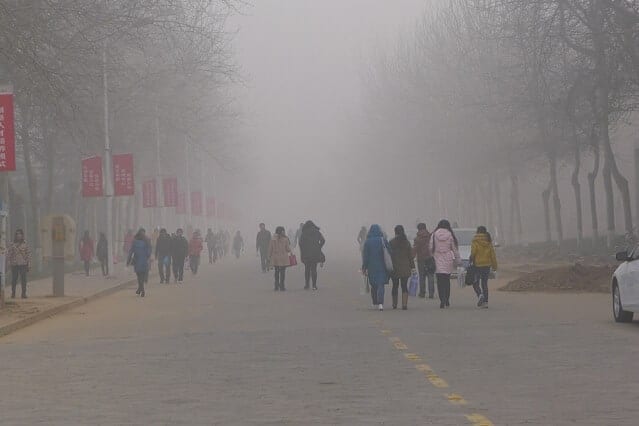For the past 30 years, China has tapped coal for about two-thirds of its energy needs, resulting in carbon dioxide and particulate emissions that have significantly degraded the nation’s air quality and impacted the global climate. In an effort to address both concerns and provide a backup fuel for intermittent renewables, China is working to increasingly replace coal with cleaner-burning natural gas. As a first step, the government aims to boost the share of natural gas in its primary energy supply from 6 to 10 percent by 2020 (the current global average is about 25 percent). However, to affect a large-scale transition from coal to natural gas in China will be far more difficult than it has been in the U.S., where the price of natural gas per unit of energy output is much lower than that of coal. In China, the situation is reversed.
One approach that’s likely to significantly reduce coal use is China’s upcoming national carbon emission cap-and-trade system, a key enabler of its pledge at the 2015 UN Paris climate talks to hit two targets by 2030: to peak CO2 emissions and decrease carbon intensity (CO2 emissions per unit of GDP) by 60-65 percent below 2005 levels. But because the cap-and-trade system penalizes carbon emissions, which result from the combustion of natural gas (albeit about half as much as coal per unit of energy output), it would have the effect of decreasing natural gas consumption as well. And at the current relative prices of fuels, the policy would not result in a switch from coal to natural gas.
That’s what researchers at the MIT Joint Program on the Policy of Global Change found while assessing different scenarios for natural gas development in China through the year 2050. Using a global energy-economic model called the MIT Economic Projection and Policy Analysis (EPPA) model, which includes a representation of China’s latest policy objectives and the technology costs in its power generation sector, they determined that China’s cap-and-trade policy will reduce greenhouse gas emissions enough to meet its climate mitigation commitments, but lower the share of natural gas in the primary energy supply to 4.2 percent, far below the 10 percent target. They also found, however, that an integrated strategy combining the cap-and-trade policy with a natural gas subsidy (an estimated $5 billion paid for through the sale of emissions permits under the policy) would enable China to reach its 10 percent natural gas target in 2020 and further reduce coal use, keeping the nation on track to meet both its climate and natural gas promotion goals.
Results of the analysis appear in the journal Climate Change Economics.
“We believe that natural gas is a critical fuel for China’s future, and its emissions trading system (ETS) is a very important policy instrument to advance its climate goals and promote a transition from coal to natural gas,” says Joint Program Deputy Director Sergey Paltsev, who coauthored the study with Danwei Zhang, a former research assistant at the Joint Program. “Hopefully, policymakers will be able to find a way to integrate these conflicting goals by using part of ETS revenue to subsidize and increase the use of natural gas. The cost is relatively modest, but the benefits will be quite substantial.”
The integrated strategy advanced in the study would reduce the price of gas relative to that of coal while increasing the cost of coal use, thereby enabling a shift from coal to natural gas without compromising climate and air pollution goals. Paltsev maintains that while the strategy would lead to a 0.5 percent welfare loss (akin to a cost-of-living increase) nationwide, that loss would likely be more than offset by lowered health-related costs (e.g., lower mortality and morbidity, fewer sick days and hospital admissions) resulting from decreased concentrations of air pollutants.
“To estimate how this added expense would be outweighed by the economic benefits of pollution reduction, we are continuing to work on the integration of more spatially resolved economic and chemical transport models that convert air pollutant emissions to atmospheric concentrations, from which health effects could be estimated,” he says. “Our previous work put an estimate of more than $100 billion in annual costs to the Chinese economy from air pollution impacts. Developing natural gas infrastructure and promoting natural gas use is an important option to address deteriorated air quality and improve living standards in China.”
The Joint Program on the Science and Policy of Global Change is funded by a consortium of federal awards and industrial and foundation sponsors.


